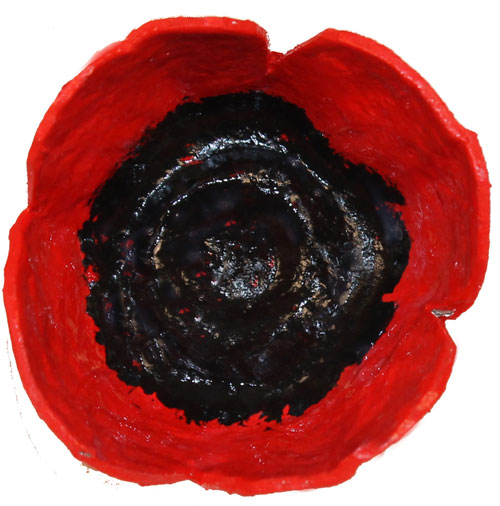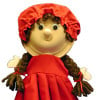Poppy Day Remembering
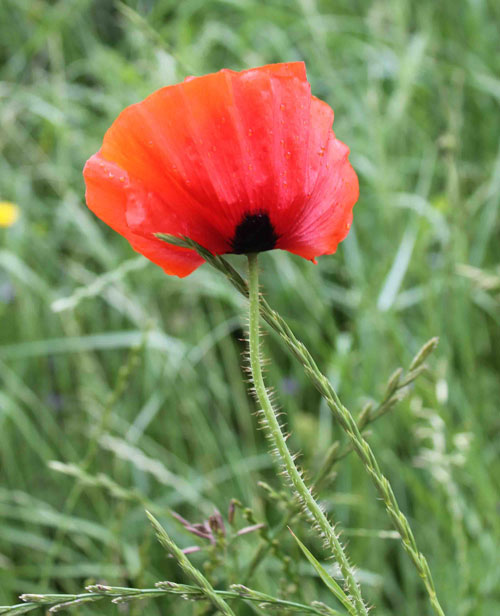
After four years of battle, on November 11th, 1918 an armistice (or an agreement to stop fighting) was signed that ended World War I. A year later, in 1919 Armistice Day was established as an official holiday. On the first Armistice Day, King George V of England hosted a banquet at Buckingham Palace on November 10th and on the 11th official commemorations took place to honor all those who gave up their lives in battle.
Today, the tradition of honoring our fallen soldiers continues. Armistice Day is more commonly referred to as Remembrance Day, Poppy Day or Veterans Day. The date of celebration varies from country to country. In England, it is celebrated on the second Sunday in November. In South Africa, celebrations take place on the Saturday before the eleventh. In many countries including: the United States and Canada, it is always celebrated on November 11th. No matter when or where Remembrance Day takes place, commemorations to honor their fallen are performed in a similar fashion. The Last Post, a solemn bugle call is played followed by two minutes of silence performed at 11:00 am, which was the official time the Armistice was signed after World War I, bringing an end to the war. Memorial poems are read aloud, poppy wreaths and small wooden crosses are laid on the tombs of fallen soldiers. Typically the Royal family, government officials and the common man participate in these services both publicly and privately.
Although it is a Federal and State holiday, Veterans Day is not observed in the United States like in other parts of the world. On Veterans Day, Americans honor all those who have or currently are serving in the military but, usually there aren’t any formal ceremonies.
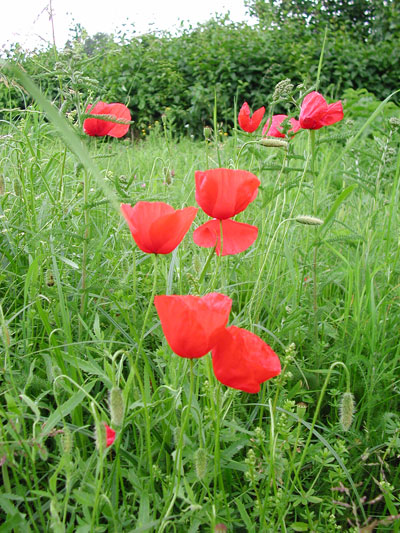
Why poppies
Bright red poppies commonly grow in large quantities across the old battlegrounds where some of the worst battles of World War I were fought. Looking out at the fields of red, one can remember the blood spilt in countless battles, not only during World War I, but in all subsequent wars.
Children are encouraged to celebrate Remembrance Day and to spend time remembering those who have fallen in war. In many countries, schools hold special assemblies that help them commemorate those who gave their lives in battle.
The battlegrounds of World War I are described in the poem, In Flanders Fields, which was written by Lieutenant Colonel John McCrae.
In Flanders fields the poppies blow
Between the crosses, row on row,
That mark our place; and in the sky
The larks, still bravely singing, fly
Scarce heard amid the guns below.
We are the Dead. Short days ago
We lived, felt dawn, saw sunset glow,
Loved and were loved, and now we lie
In Flanders fields.
Take up our quarrel with the foe:
To you from failing hands we throw
The torch; be yours to hold it high.
If ye break faith with us who die
We shall not sleep, though poppies grow
In Flanders fields.
Let us remember those who have fallen, let us pay tribute to those soldiers who gave up all during battle, on this a day of Remembrance.
Poppy Craft
Something that all children can do regardless of where they live is to show remembrance by wearing a poppy, maybe one they have made themselves.
This act helps them to think of those who have fought in battle and also it can help them understand what the cost of freedom really is.
Materials needed:
- egg carton
- large scissors
- small pointy scissors
- acrylic paint (white, red and black)
- paint brush
- deer foot brush
- glue gun
- black pompom 2 cm (¾ in) diameter (optional)
- brooch pin
- acrylic varnish (optional)
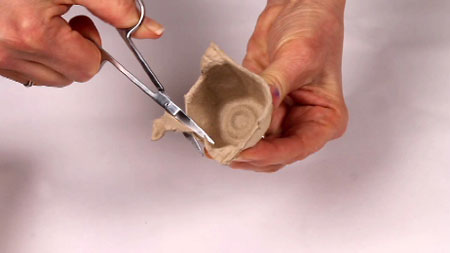
Cut a cell of an egg carton.
Trim the edge of the cell with small scissors to form a small "bucket".
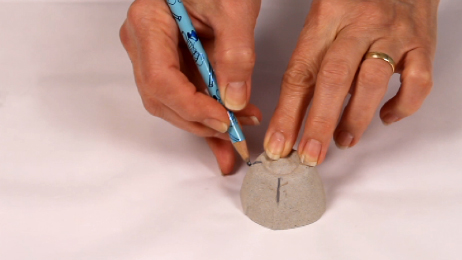
With a pencil, divide the back of the cell into four approximately equal sections .
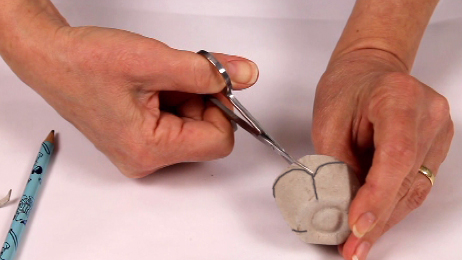
Next, draw the four petals.
Cut around the four petals with small scissors.
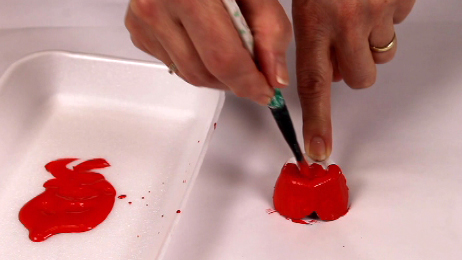
First paint the flower with a coat of white paint. The white base coat will prevent the gray of the egg carton from showing through the red paint.
When the white paint is dry, paint the flower in red.
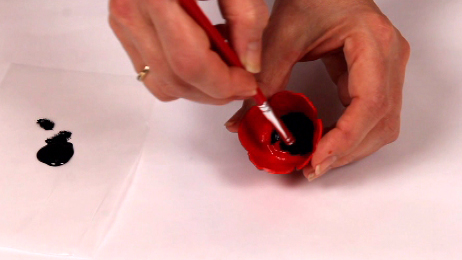
When the red paint is dry, paint the heart of the flower in black with a deer foot brush. That gives a more natural effect atthe edge of the petals.
Note: the « deer foot » is a brush with an angled edge that gives texture to the paint.
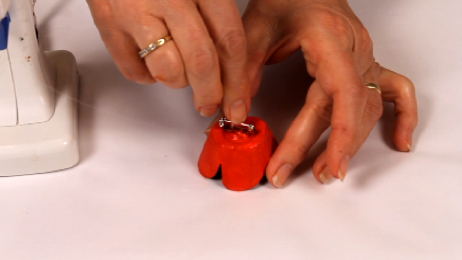
On the back of the flower, glue a brooch pin with the glue gun .
